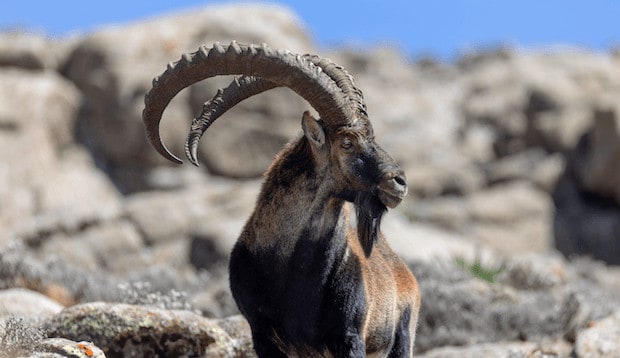Students of the cultural context of the Bible are familiar with the association between animals and idolatry.
The idolatrous worship of the golden calf (egel; Exod 32:1–24) makes the connection explicit. Even after the Israelites entered into a covenant relationship with Yahweh at Sinai, Moses and Aaron had to act to prevent the people from sacrificing to “goat demons” (se’irim) in the wilderness (Lev 17:7). Centuries later, the apostasy of King Jeroboam returned this idolatry to the northern kingdom of Israel (“He appointed his own priests for the high places and for the goat idols [se’irim] and for the calves [agalim] that he had made”; 1 Chr 11:15).
The reference to “goat demons” (se’irim) in the wilderness and their idols is of special interest because the link between the demonic and the desert has strong Old Testament precedent. The connection would have been apparent to Israelites because a range of wild animals and birds were specifically associated with foreign gods and their idols in pagan religions of biblical times.
For example, consider the listing of desert creatures in Isaiah 34:
But the hawk and the porcupine shall possess it, the owl [yanshoph] and the raven shall dwell in it.… Thorns shall grow over its strongholds, nettles and thistles in its fortresses. It shall be the haunt of jackals [tannim], an abode for ostriches. And wild animals [tsiyyim] shall meet with hyenas [iyyim]; the wild goat [se’irim] shall cry to his fellow; indeed, there the night bird [lilith] settles and finds for herself a resting place. (Isa 34:11, 13–14)
The Hebrew terms in this passage are associated with false gods in the religions of the ancient Near East. The yanshoph of verse 11 has been identified with the ibis, the animal emblem of the god Thoth, worshiped by ancient Egyptians.
The words tannim and iyyim (vv. 13–14) are set in parallel relationship elsewhere in Isaiah (13:22), possibly suggesting the terms were synonyms for a wild dog. However, the Septuagint (the Greek translation of the Old Testament), renders both words with onokentauros, variously interpreted as “hairless ape” or “donkey-centaur, mythic creature.” Since tsiyyim is related to vocabulary for arid places, the term is considered to point to a sinister “desert creature.” Its placement in Isaiah 34:14, in parallel with the “goat demons” (se’irim), strongly implies a demonic meaning.
This notion is strengthened by the reference in the same verse to lilith, a female demon with a long history stretching back to Sumerian material. She was considered a night-demon who took the lives of small children and seduced men nocturnally.
By New Testament times, the association of demons and the wilderness would have been very familiar to most Jews. Demonic encounters in the Gospels are often set in the desert (e.g., Matt 12:43–45; Luke 8:29; 11:24–26), and Jesus encountered Satan in the wilderness (Matt 4:1–11).
This last encounter is telling, for the Son of God dispatches the desert’s most lethal threat with three citations from Deuteronomy (6:13, 16; 8:3)—a text famously set in Israel’s desert encampment just before the conquest of Canaan. Jewish readers of the Gospel accounts would not have missed the point: Jesus of Nazareth has overcome the powers of darkness; believe in him.
***

Dr. Michael S. Heiser is the author of The Unseen Realm: Recovering the Supernatural Worldview of the Bible and Angels: What the Bible Really Says about God’s Heavenly Host.
His newest book, The World Turned Upside Down: Finding the Gospel in Stranger Things, is now on pre-order.
He’s taught many Mobile Ed courses, including Problems in Biblical Interpretation: Difficult Passages I.







